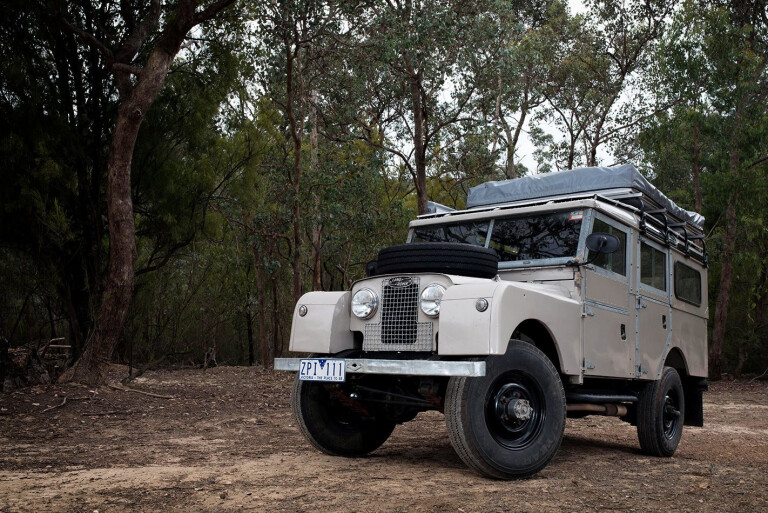
Our story starts in Alice Springs in 1966, covers most of The Outback and Far North Queensland – with side trips to Denmark and Papua New Guinea – and ends in Melbourne 30-odd years later, where Paul Ross was born.
When he was 14, Paul moved to The Alice at a time when the outback town was still the frontier, as he recalls. “There were only about 5000 people there and the Stuart Arms Hotel still had tie-rails for horses. It was a fabulous place to grow up, especially if you worked in the outback like I did.” He was 18 when he found his Series 1 Land Rover Station Wagon.
 “I bought it off an aboriginal man called Milton Liddle, who was a friend of mine and had a wood yard off the Stuart Highway. Milton got it in a Department of Works auction, probably in a job-lot because he had a lot of Series 1 utes that he used to collect mulga and he didn’t want a station wagon. I’d had a long-wheelbase Series 1 ute but I hadn’t seen a five-door and I thought: ‘What a beaut thing!’. With its twin-skinned ‘Safari’ roof it was the perfect camping car.” Paul paid $150 for it.
“I bought it off an aboriginal man called Milton Liddle, who was a friend of mine and had a wood yard off the Stuart Highway. Milton got it in a Department of Works auction, probably in a job-lot because he had a lot of Series 1 utes that he used to collect mulga and he didn’t want a station wagon. I’d had a long-wheelbase Series 1 ute but I hadn’t seen a five-door and I thought: ‘What a beaut thing!’. With its twin-skinned ‘Safari’ roof it was the perfect camping car.” Paul paid $150 for it.
Series 1 Land Rover chassis and running gear were imported from the UK and the bodies were made and the cars assembled by the Pressed Metal Corporation in Enfield in Sydney. Paul’s’ car was in excellent condition and painted in garish Department of Civil Aviation yellow and he believes it came off the Daly River airstrip, where Super Constellations would land en route to Sydney. The DCA used Land Rover wagons to ferry aircrew to the planes. “It was originally a 12-seater and they were built to get around a tax loophole, reportedly, and classed as a light bus,” he says. “They only made 7000 plus the prototype before they went to the 10-seater Series 2.”
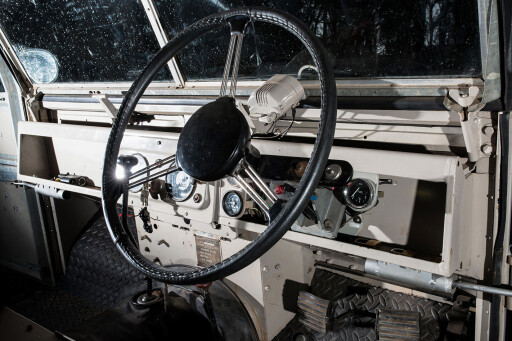 The DCA yellow had to go and Ross soon gave it a rough respray but kept one bolt under the driver’s seat yellow to remind him of the car’s origins. Since then he has resprayed it twice in ‘koala’ grey. At the time he was working as a surveyor for the Department of Lands and Surveys and during long stints in remote corners of the Outback he honed his mechanical abilities and came to appreciate the ‘impossible-to-kill’ Land Rover.
The DCA yellow had to go and Ross soon gave it a rough respray but kept one bolt under the driver’s seat yellow to remind him of the car’s origins. Since then he has resprayed it twice in ‘koala’ grey. At the time he was working as a surveyor for the Department of Lands and Surveys and during long stints in remote corners of the Outback he honed his mechanical abilities and came to appreciate the ‘impossible-to-kill’ Land Rover.
“There was nothing out there then just thousands of miles of dirt,” he says. “We’d go out for six-week stints and come back for week. It was a hard life but it was fun and the money was good. We had a Land Cruiser and a Land Rover and an old four-wheel drive Bedford to carry fuel and water. I’ve seen places nobody will go to again.
“In 1967, myself and Dick Comber surveyed the Northern Territory/South Australian border and put the offsets in Surveyor General’s Corner. The next year we put the block and the brass plaque in then started to throw over towards Poeppels Corner. We’d cut two metre-wide traverse lines and lay the blocks and pegs on our way to Poeppels. You could sit on a rise and look back over your traverse line going over the cusp of the earth; it was amazing. When we got to the Stuart Highway the border was out of whack, so we took the sign out and moved it up the road, which gave South Australia a bit more territory.”
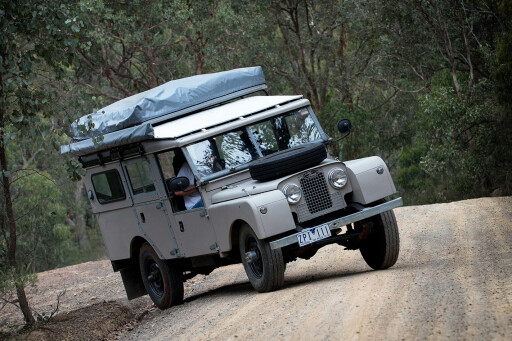 When he wasn’t working Paul would go “tripping” in the car he calls ‘Zippy’ (after its ZPI 111 number plate) to far flung places like Halls Creek, the Canning Stock Route, Cape York, Darwin, and The Gulf. Ross has no idea exactly how many kilometres Zippy has travelled but most of them have been hardcore.
When he wasn’t working Paul would go “tripping” in the car he calls ‘Zippy’ (after its ZPI 111 number plate) to far flung places like Halls Creek, the Canning Stock Route, Cape York, Darwin, and The Gulf. Ross has no idea exactly how many kilometres Zippy has travelled but most of them have been hardcore.
“When I lived in Alice I used to visit my father in Melbourne and I’d come down the Oodnadatta Track. The South Road was 1000 miles of corrugations so deep you could disappear in them. There was no bitumen, there was no Stuart Highway, it was all dirt from Port Augusta to Alice Springs, just a little bit of bitumen at Woomera.” And when you’re a surveyor the middle of the Aussie nowhere, it’s handy to be handy with the spanners.
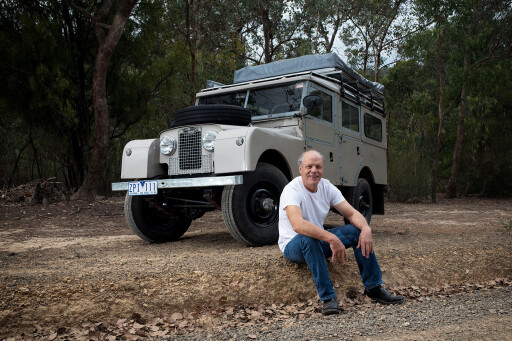 “I was the only one who knew how to fix cars, my old man taught me,” Paul says. “That’s why I like Land Rovers, they're simple. If I do take Zippy back to some of the places that I used to survey it can’t stick me up. I carry two spare axles but there’s nothing else that can go wrong with it. It has never let me down, not once, and we’ve had it in some bloody incredible spots.”
“I was the only one who knew how to fix cars, my old man taught me,” Paul says. “That’s why I like Land Rovers, they're simple. If I do take Zippy back to some of the places that I used to survey it can’t stick me up. I carry two spare axles but there’s nothing else that can go wrong with it. It has never let me down, not once, and we’ve had it in some bloody incredible spots.”
Zippy was mechanically original when Ross bought it but the asthmatic 2.0-litre four under the bonnet didn’t cut it and was replaced by a second-hand high-compression 161-cube Holden ‘red’ motor. But it wasn’t much better and it was turfed for a reconditioned Embee Performance 161 in 1971, during one of Paul’s trips to Melbourne.
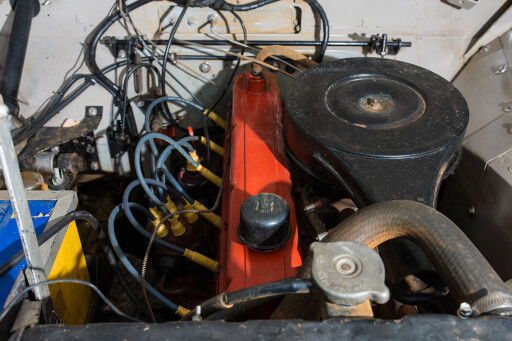 “That Embee engine has done hundreds of thousands of miles and never broken down but it blew a head gasket after the photo shoot!” Paul laughs. “It’s a bit tired now so I’m building up a 173, which will probably have a Weber, extractors and a Yella Terra head. But Zippy still has its original gearbox which is beautiful and quiet.” Ross also has a good tip for early Land Rover owners.
“That Embee engine has done hundreds of thousands of miles and never broken down but it blew a head gasket after the photo shoot!” Paul laughs. “It’s a bit tired now so I’m building up a 173, which will probably have a Weber, extractors and a Yella Terra head. But Zippy still has its original gearbox which is beautiful and quiet.” Ross also has a good tip for early Land Rover owners.
“I recommend anyone with a Series Land Rover to put Range Rover diff centres in, don’t bother with an overdrive. They slot straight into a 48-model banjo diff, take 10-spline axles, all you have to do is take the dowels out. Doing that lifts the ratio so you have a higher cruising speed. I think it’s a brilliant conversion.”
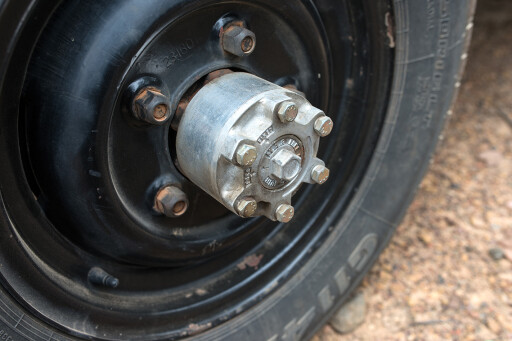 Ross met his wife Margit in 1974. She had flown from Copenhagen to Singapore in a very dodgy Russian plane then hopped a Qantas ‘Wallaby Route’ flight to Darwin where she boarded the ‘milk run’ plane to Alice to meet up with a Danish girlfriend, who also knew Paul. It was love at first sight for Paul, who was by now working for the Department of Rural Health. Margit smiles mischievously and says she and her friend Karen “used” Paul because “he had the car we needed to get to Cape York.” It was the start of many adventures together, including living on a beach on The Cape for six weeks and having the army drop supplies from Caribou transporters.
Ross met his wife Margit in 1974. She had flown from Copenhagen to Singapore in a very dodgy Russian plane then hopped a Qantas ‘Wallaby Route’ flight to Darwin where she boarded the ‘milk run’ plane to Alice to meet up with a Danish girlfriend, who also knew Paul. It was love at first sight for Paul, who was by now working for the Department of Rural Health. Margit smiles mischievously and says she and her friend Karen “used” Paul because “he had the car we needed to get to Cape York.” It was the start of many adventures together, including living on a beach on The Cape for six weeks and having the army drop supplies from Caribou transporters.
After their Cape York trip, they left the Land Rover in shed in Cooktown and flew to Port Moresby for New Guinea's independence celebrations in 1975 and explored the country with a young man who would later become prime minister, Paias Wingti. Then they caught a ship back to Australia, picked up the Land Rover, and drove the 3000-plus kilometres to Melbourne where they lived on a strawberry farm in the Dandenong Ranges before relocating to Denmark. Again, the Land Rover was left in a shed. Six months later they were back in New Guinea where Paul managed a quarry in New Britain for a year before they returned to Australia and the Land Rover. Zippy is like a homing beacon.
 In the ‘90s, Paul and Margit lived the “good life” on an island in Denmark for seven years while the Land Rover languished in his mother’s garage in Alice Springs. Reunited, Zippy needed only routine maintenance – air in the tyres, new tailshafts, kingpin tensions, tie-rod ends, new exhaust and new brake seals – before it was driven back to Melbourne where the couple has been based since. But their wanderlust is insatiable and they’re about to sell the mud-brick house they built themselves and head off again, towing their 1956 Carapak Twelve Nine caravan. Favourite trip?
In the ‘90s, Paul and Margit lived the “good life” on an island in Denmark for seven years while the Land Rover languished in his mother’s garage in Alice Springs. Reunited, Zippy needed only routine maintenance – air in the tyres, new tailshafts, kingpin tensions, tie-rod ends, new exhaust and new brake seals – before it was driven back to Melbourne where the couple has been based since. But their wanderlust is insatiable and they’re about to sell the mud-brick house they built themselves and head off again, towing their 1956 Carapak Twelve Nine caravan. Favourite trip?
"We went into the Simpson Desert with my son Torben looking for an old opal mine,” he remembers. “An old bloke in Alice called Tom Findlay gave me a map showing an opal adit an Englishman had dug in 1910. We found it, following old fence lines, and we found opal so we’re going back with my brother, who also has a Land Rover, to make a film about it.”
4X4 Australia first bumped into Paul and Zippy in a suburban supermarket carpark and struck up a conversation but that happens a lot, he reckons. “If you pull up in a caravan park somewhere, people will immediately come up to the car for a chat and I’ve had lots of offers for it. It’s a good old beast, it’s been everywhere.” Well, almost. There’s a bond between this man and this machine that is unbreakable and for Paul and Zippy, there will always be another Outback track to survey.
 HOLDING UP THE GHAN
HOLDING UP THE GHAN
“I did an axle towing a 25-foot bond-wood caravan from Melbourne to Alice Springs. I was going to put the car and van on flat-top carriage at Port Augusta for the leg to Alice because the road north would have been too rough for the van. I got to the railway crossing at Augusta and was just about over it when a rear axle went, so I was blocking the tracks. Then the train came and I had to tell the driver to wait while I fixed the car.
“In those days I couldn’t afford free-wheeling hubs and didn’t run a front tailshaft but I kept one in the car. So I bolted in the front tailshaft, put it in 4WD, and pulled the van onto the flat-top with front-wheel drive, which was a pretty good effort. I think I’ve broken about four axles in 49 years”
Get the latest info on all things 4X4 Australia by signing up to our newsletter.

COMMENTS